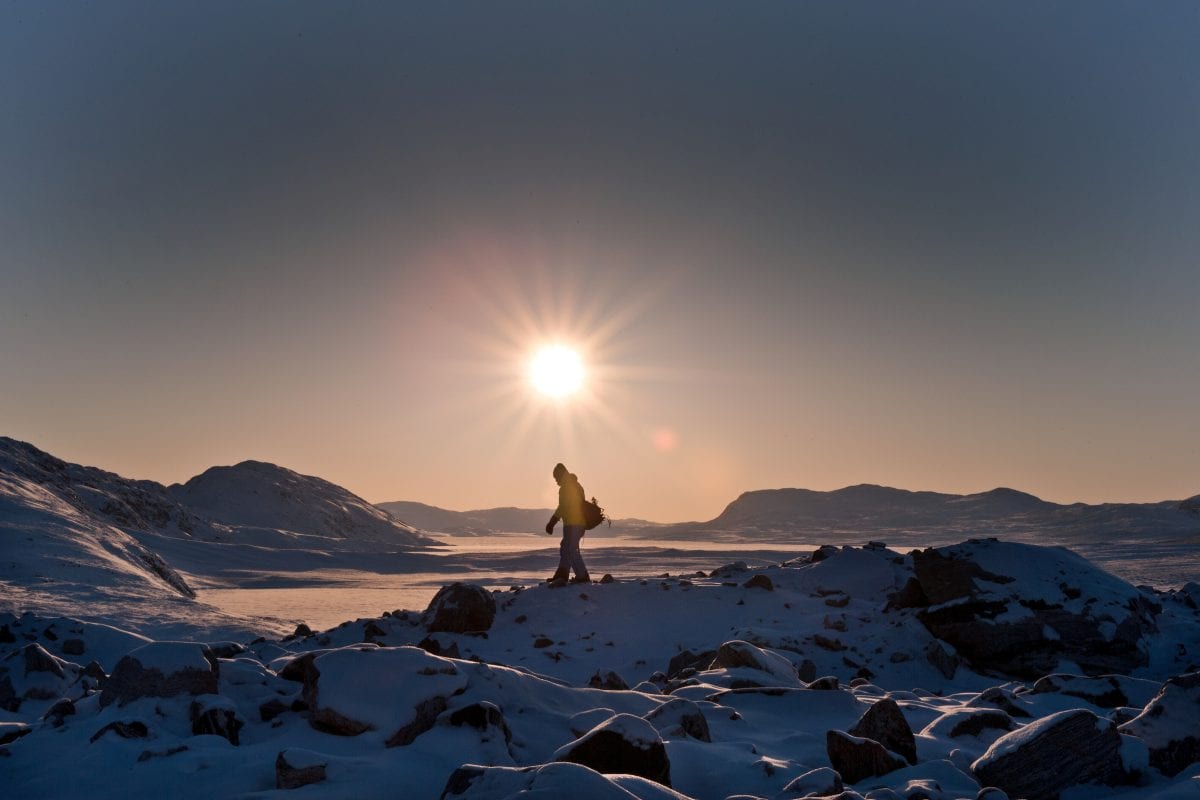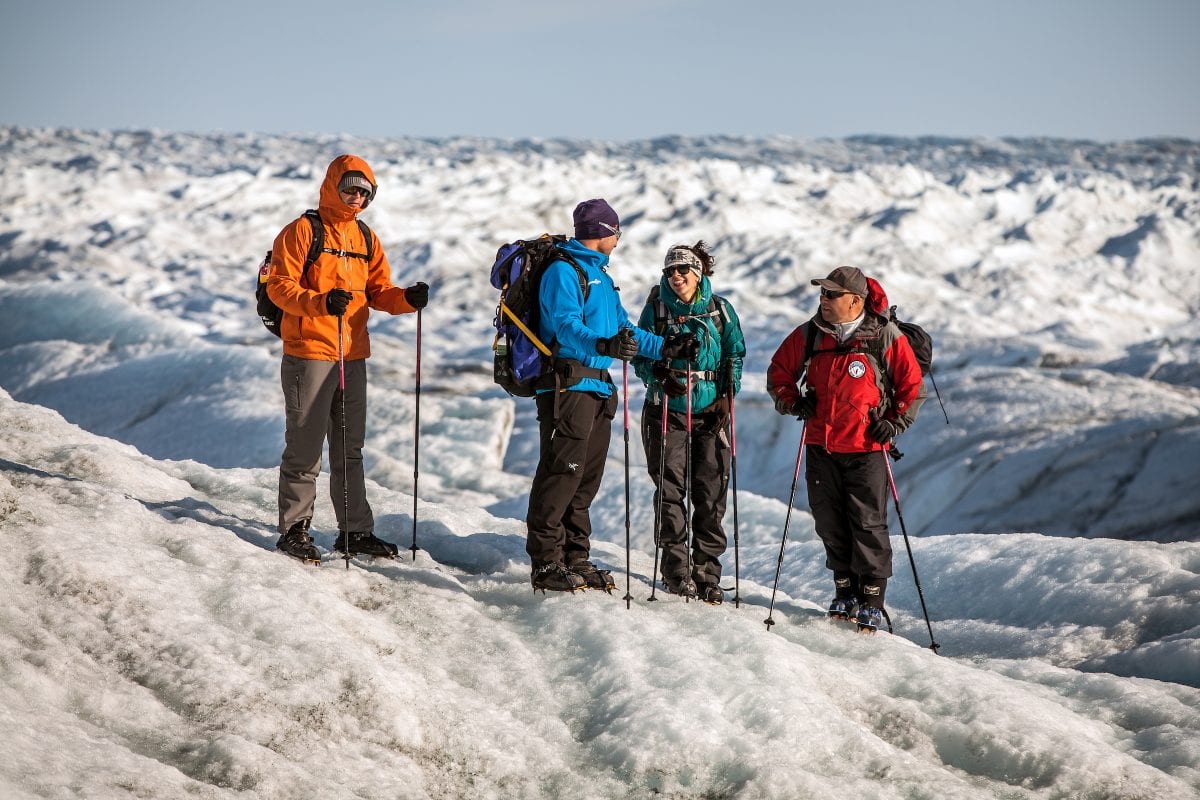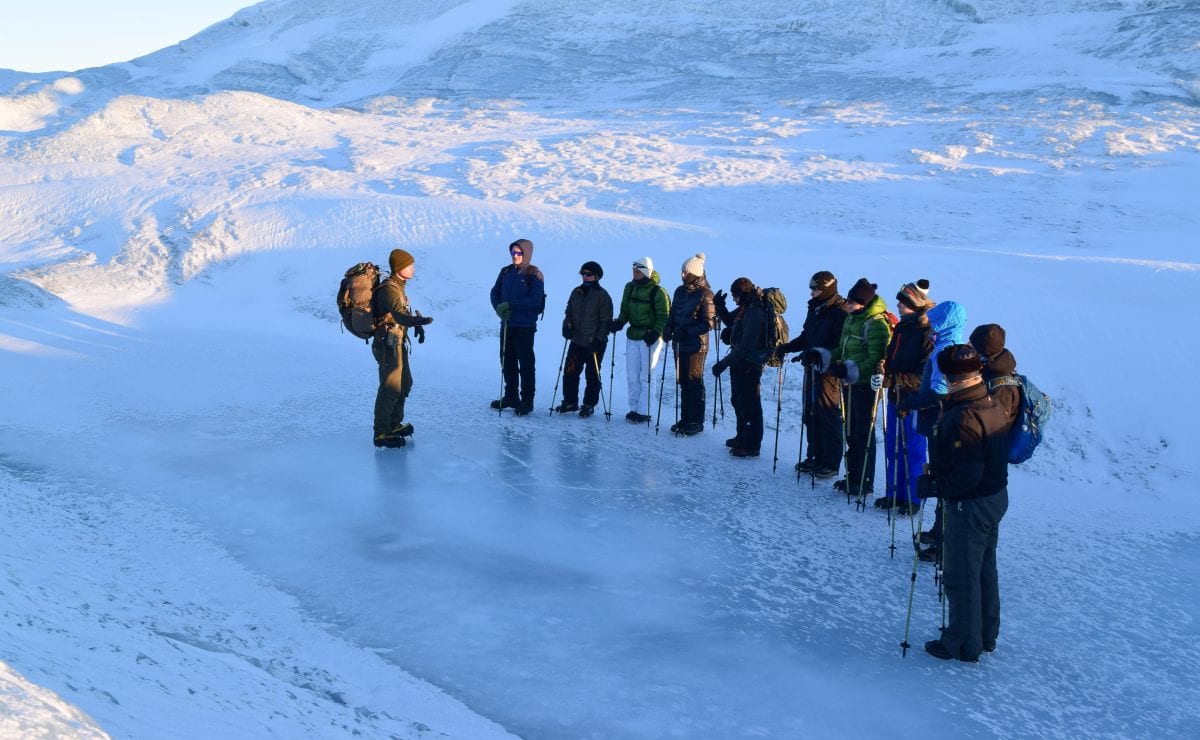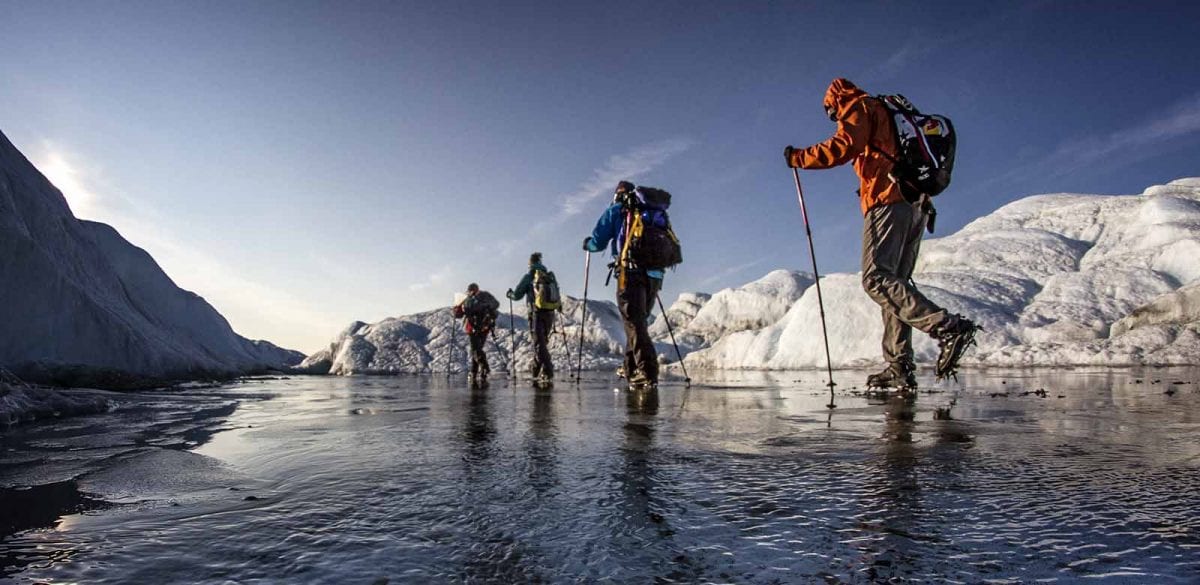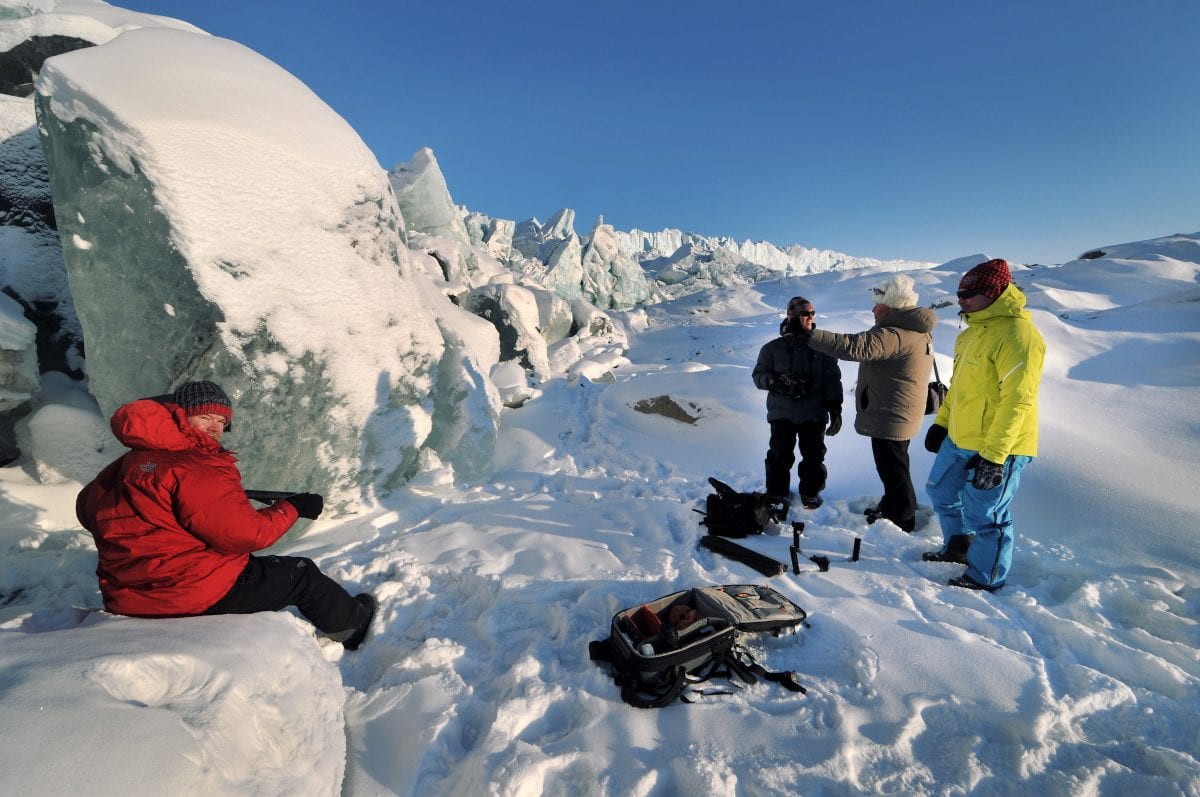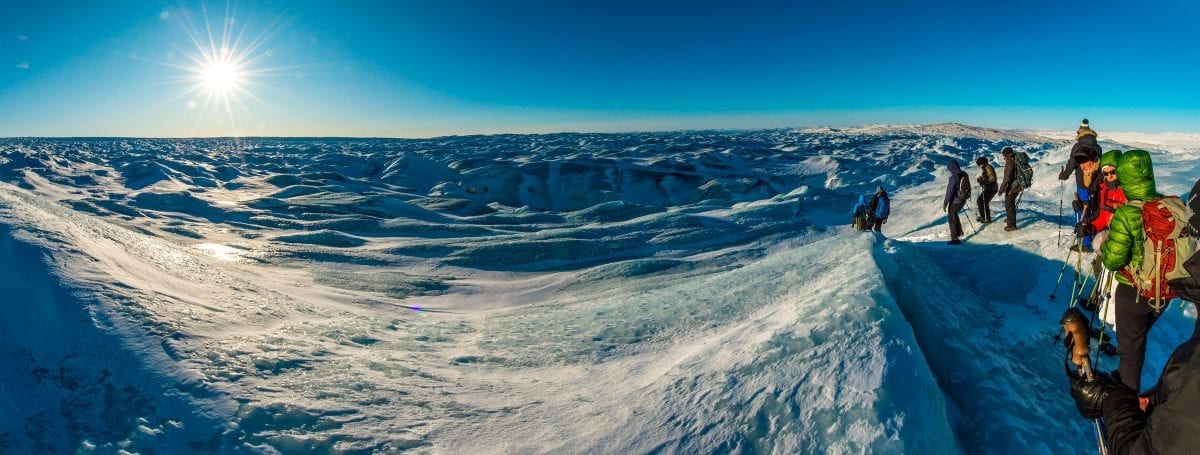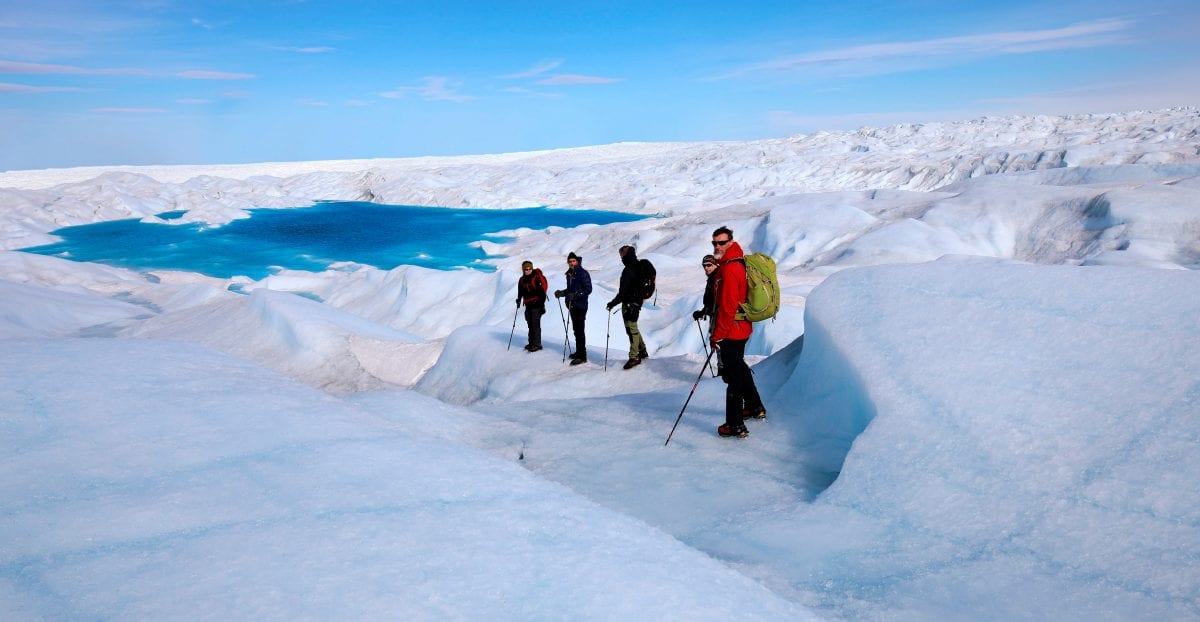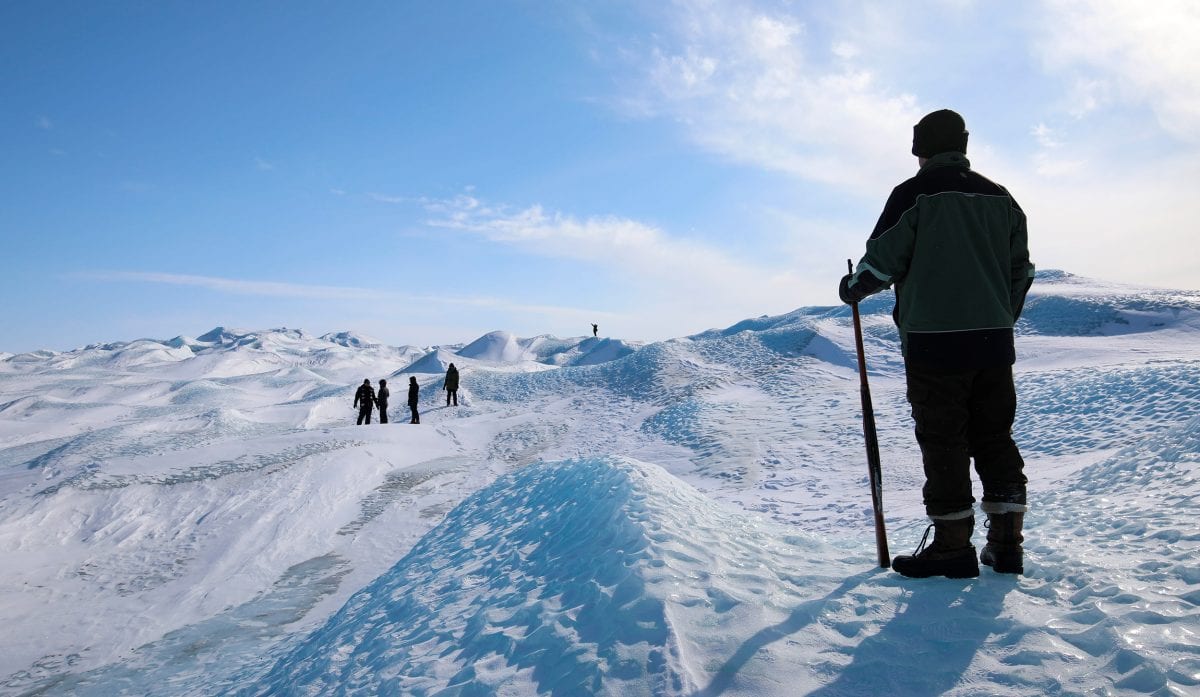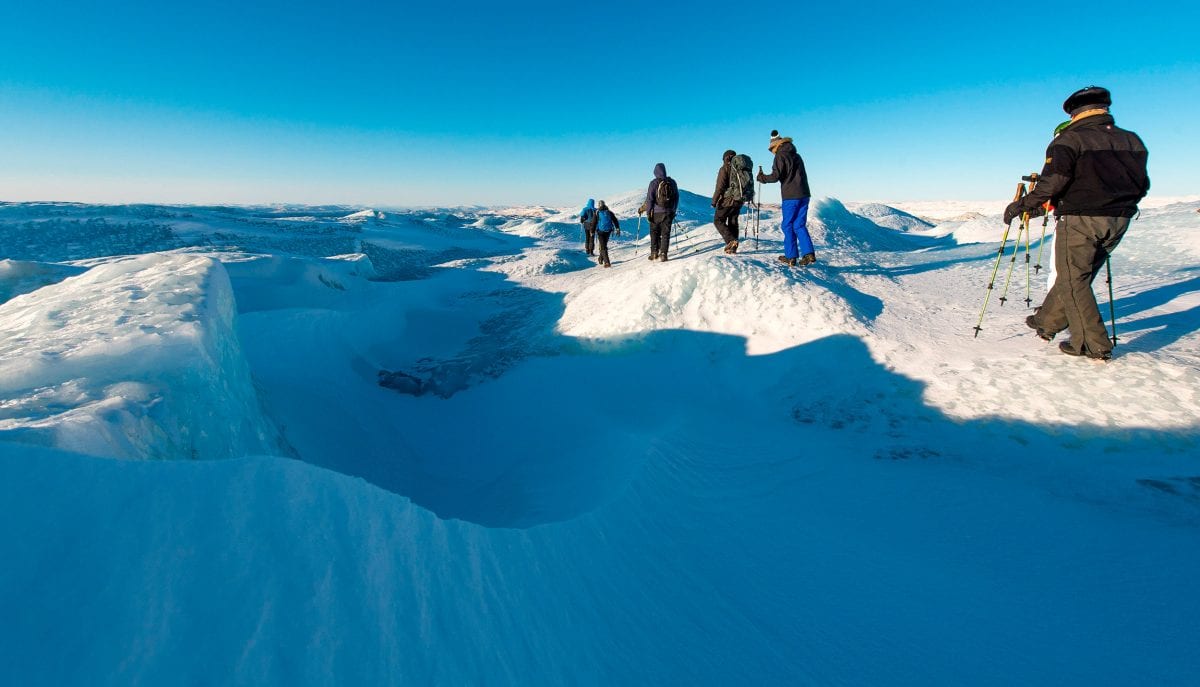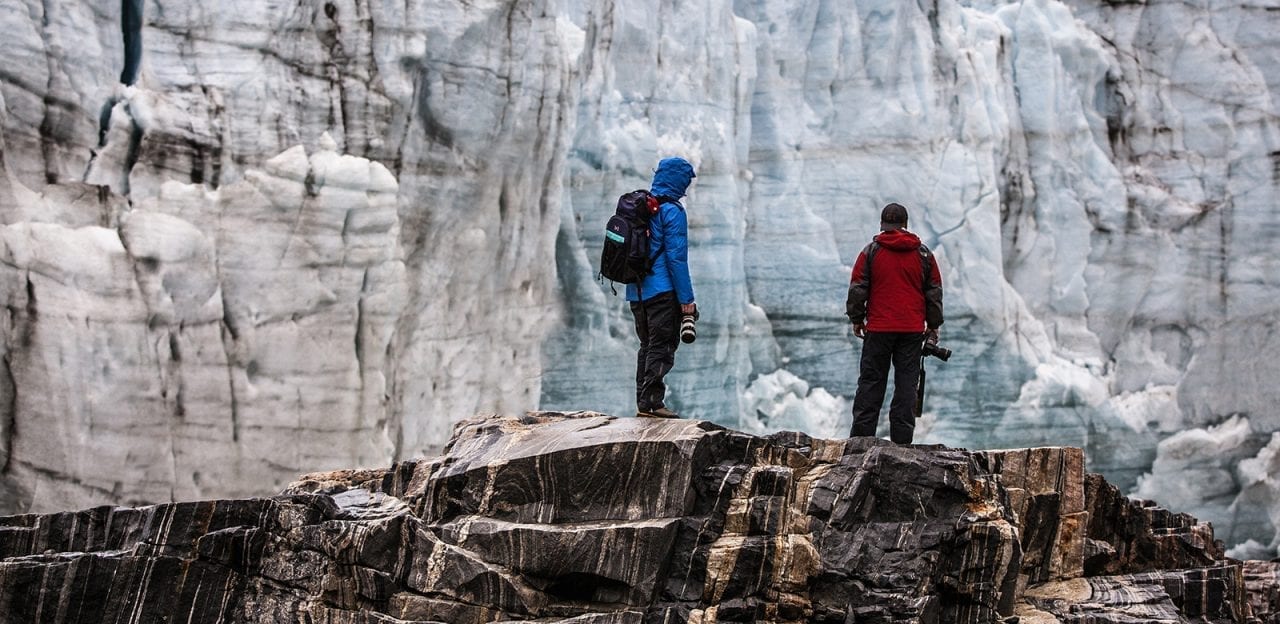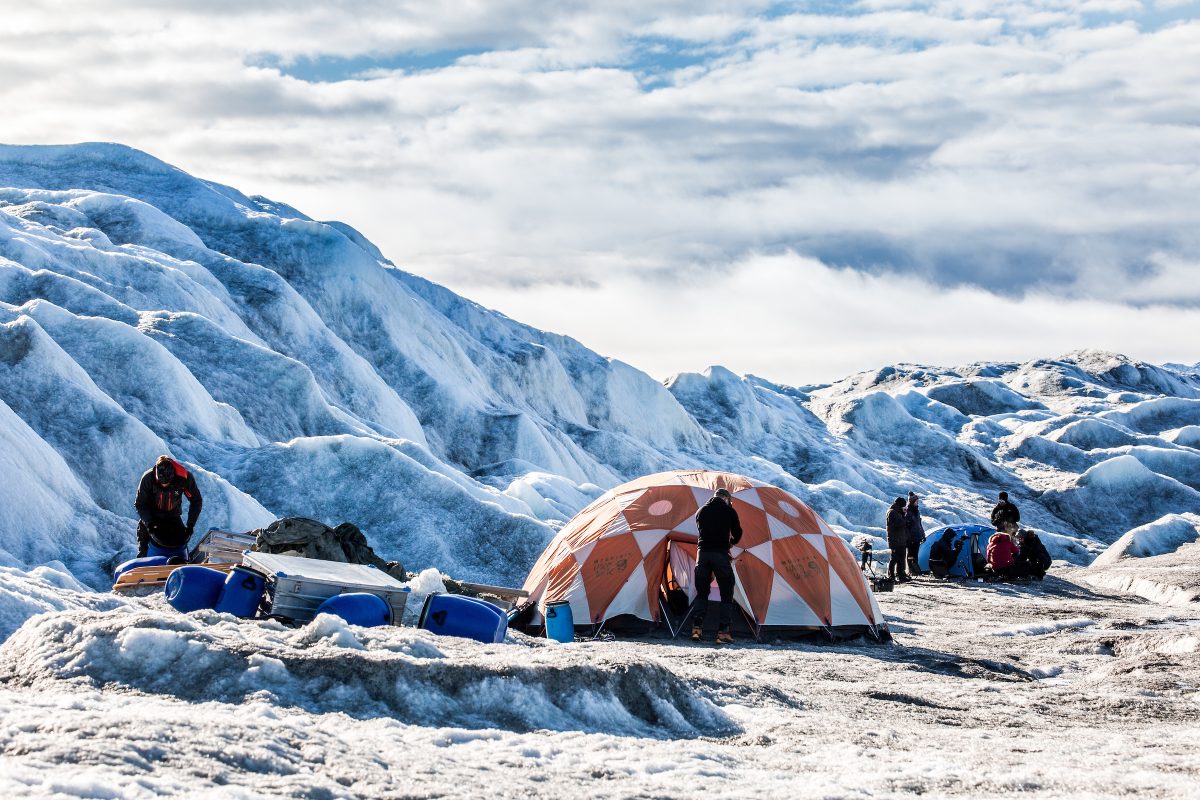How to get there
You can experience the Greenland Ice Sheet in many places in Greenland but no place as easily as in Kangerlussuaq, where you can drive to the edge of the ice and even get up to walk on the mighty ice cap. The trip can be made by foot or bike, but it is in 25-37 kilometers of hilly terrain on dirt roads, so we recommend that you take a 4×4 bus excursion there.
One excursion goes to Point 660, where you get to walk on the ice. Also, near this point is Camp Ice Cap, where you can stay overnight in a tent on the Ice Sheet. Then there is the trip to Russell Glacier, which is also dome by 4×4 bus. Here you experience a high wall of ice, lying among rocks and green plains.
You can only see the Ice Sheet from two towns in Greenland: Narsaq in South Greenland and Qaanaaq in North Greenland. In other places, however, you are not far from the Ice Sheet, although it is not directly visible from the town. This is true, for example, in Ilulissat, Tasiilaq, Narsarsuaq, and Uummannaq. And then there are places where you can see other glaciers close by, such as in Kulusuk.
The Greenland Ice Sheet up close
The Ice Sheet is not just a giant white clump of ice. If you come close, you will experience ice with crevasses, holes, and lakes in many different shades of white, gray, blue, and even black. In the summer, in many of the fissures in the ice, rivers of meltwater flow. On the whole, the ice is like a living organism, which at its edge calves of ice into the sea and lakes.
When you visit the Ice Sheet, there is an important rule: Follow the marked routes. The Greenland Ice Sheet lives its own life, so do not do anything foolhardy. There are places like Point 660 in Kangerlussuaq, where you can get up on the ice without any hassle and danger but everywhere else you should follow the directions of your guide or the captains of the boats.
